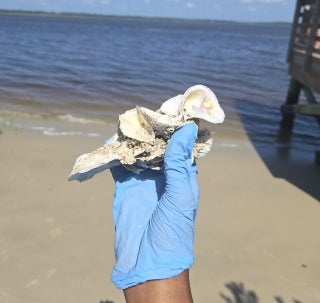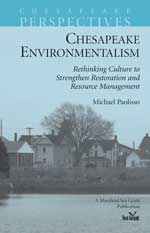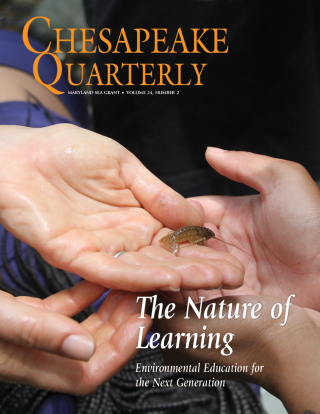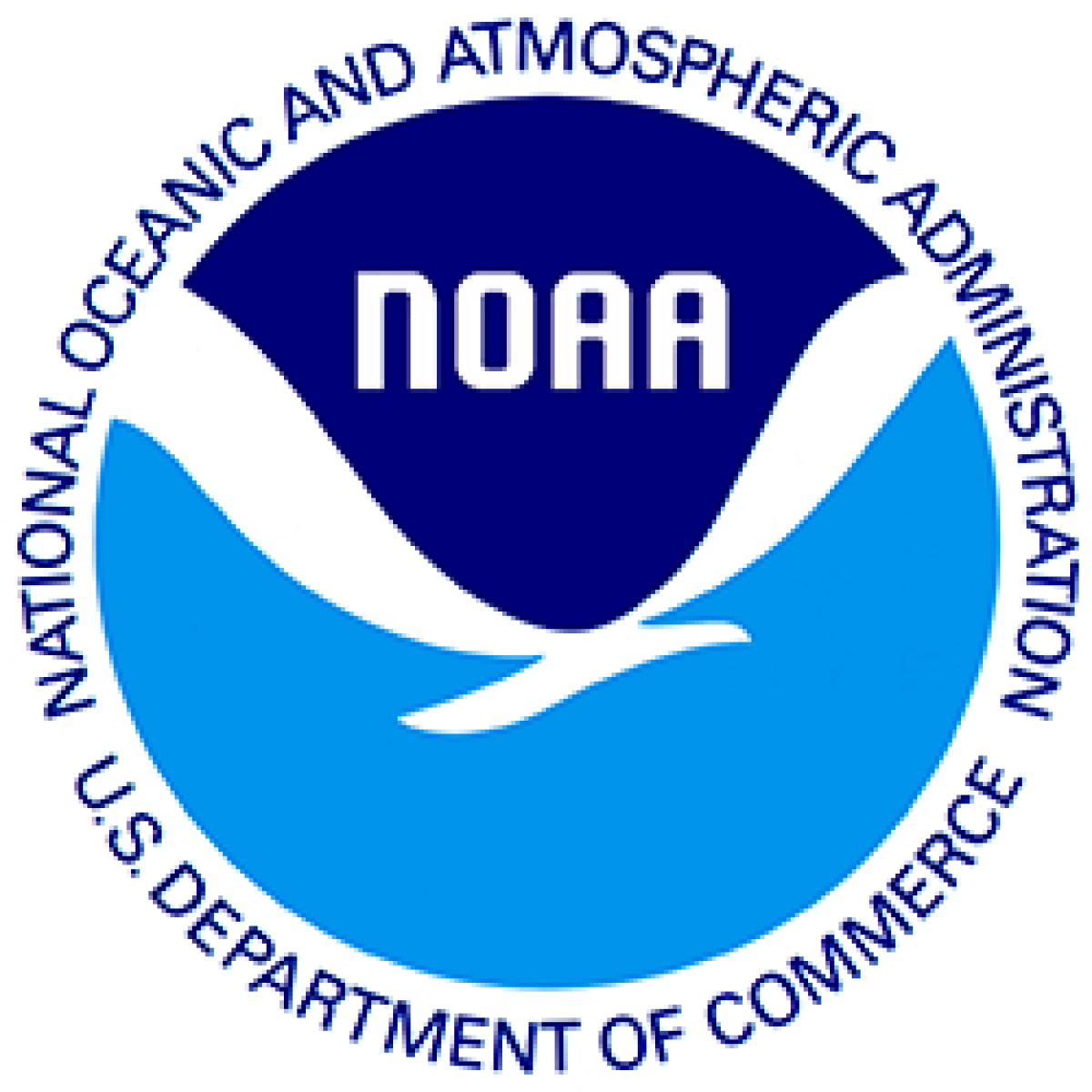Knauss legislative fellowships in Congress help build careers — and they're fun and educational. See our video and fact sheet for details.
The Maryland Sea Grant Bookstore will be closed for the winter holidays from Monday, December 15th to Friday, January 2nd and will not be taking orders during that time.
Finding My Reef: Building Community in Environmental Justice
Oyster larvae are tiny and vulnerable when they first enter the world, drifting through the water in search of a place to call home. But they rarely settle alone. Instead, they’re drawn to chemical signals released by other oysters, clustering together to form dense, interconnected reefs. These reefs don’t just help the oysters thrive; they become strongholds of biodiversity and resilience, transforming coastlines one shell at a time.
When I began my internship at Maryland Sea Grant, I didn’t know where I would fit in. I had limited knowledge of watershed restoration and felt like those oyster larvae, searching for the right place to “attach.” I tested out different tasks like writing descriptions of stormwater best management practices and creating data visualizations for vegetation surveys, while also stepping into new spaces like rain barrel workshops, capacity-building meetings, and career day panels. But no matter what I was engaged in, I found myself drawn to people and initiatives fighting for something bigger than themselves—the well-being of communities whose voices too often go unheard.
That pull toward community-centered work only deepened as the summer went on. During a site visit to an Indigenous-run tobacco farm in Southern Maryland, founder Sebi Tayac shared how he is working to reconnect the Piscataway Conoy community with traditional farming stewardship. I later interviewed Maryland’s Deputy Secretary of the Environment, Suzanne Dorsey, who spoke about the Maryland Department of the Environment’s commitment to protecting overburdened and underserved communities, even amid a shifting political landscape. I also met members of the Baltimore Greater Environmental Equity Network, hearing firsthand how collaboration across local, state, and federal levels is helping them combat flooding and waterway pollution. Though the settings and stories differed, these experiences reminded me that environmental justice is built on relationships, shared knowledge, and solidarity.
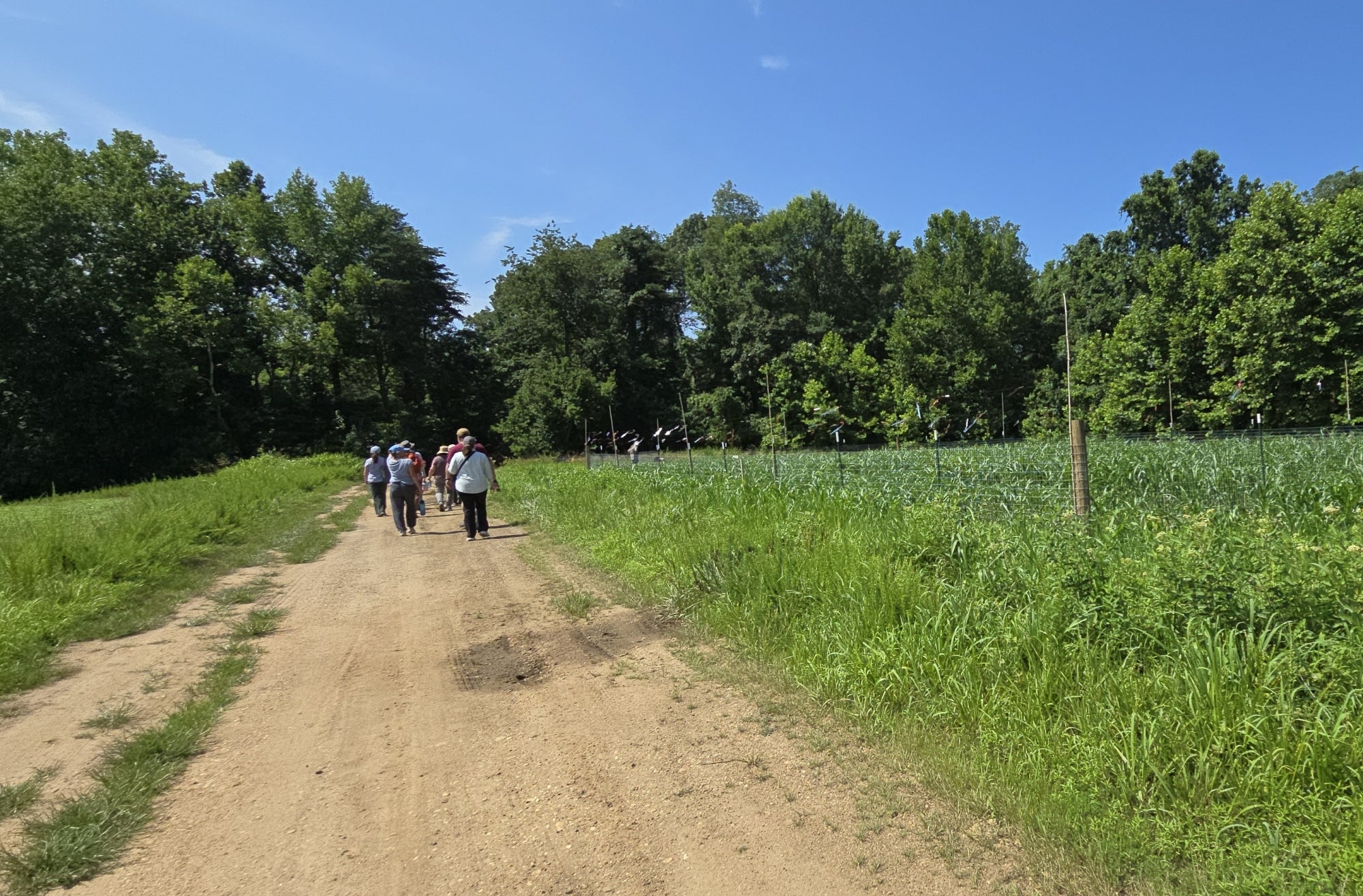
Translating these real-world insights into educational resources was a truly eye-opening experience. As I delved deep into the Watershed Stewards Academy curriculum and explored environmental justice literature and media to draft a new environmental justice module, I was confronted by some hard truths: environmental education and restoration in Maryland often overlook the communities most affected by environmental harms—communities that also face systemic barriers that limit their ability to participate in stewardship.
This pushed me to reflect on the importance of equity, not as a buzzword, but as a necessity for the Watershed Stewards Academy and the broader environmental justice movement. True progress toward equity forces us to ask if those most affected by environmental harm truly have the power, resources, and representation to shape solutions. I began to wonder: Who is restoration truly for? Who gets to be called an ”expert”? And could the academy’s curriculum, however well-intentioned, be creating a savior narrative that sidelines local histories and community knowledge?
I came to realize that equity cannot simply be an afterthought, but must serve as a framework that guides every decision in environmental restoration initiatives, from the language we use to the partnerships we form. Fred Tutman, founder of Patuxent Riverkeeper, put it best: “We have to engage other people, populations, and ideas because no one ethnic group or class is up to it alone, and no one group is the sole source of ingenuity, intelligence, or passion on these issues.”
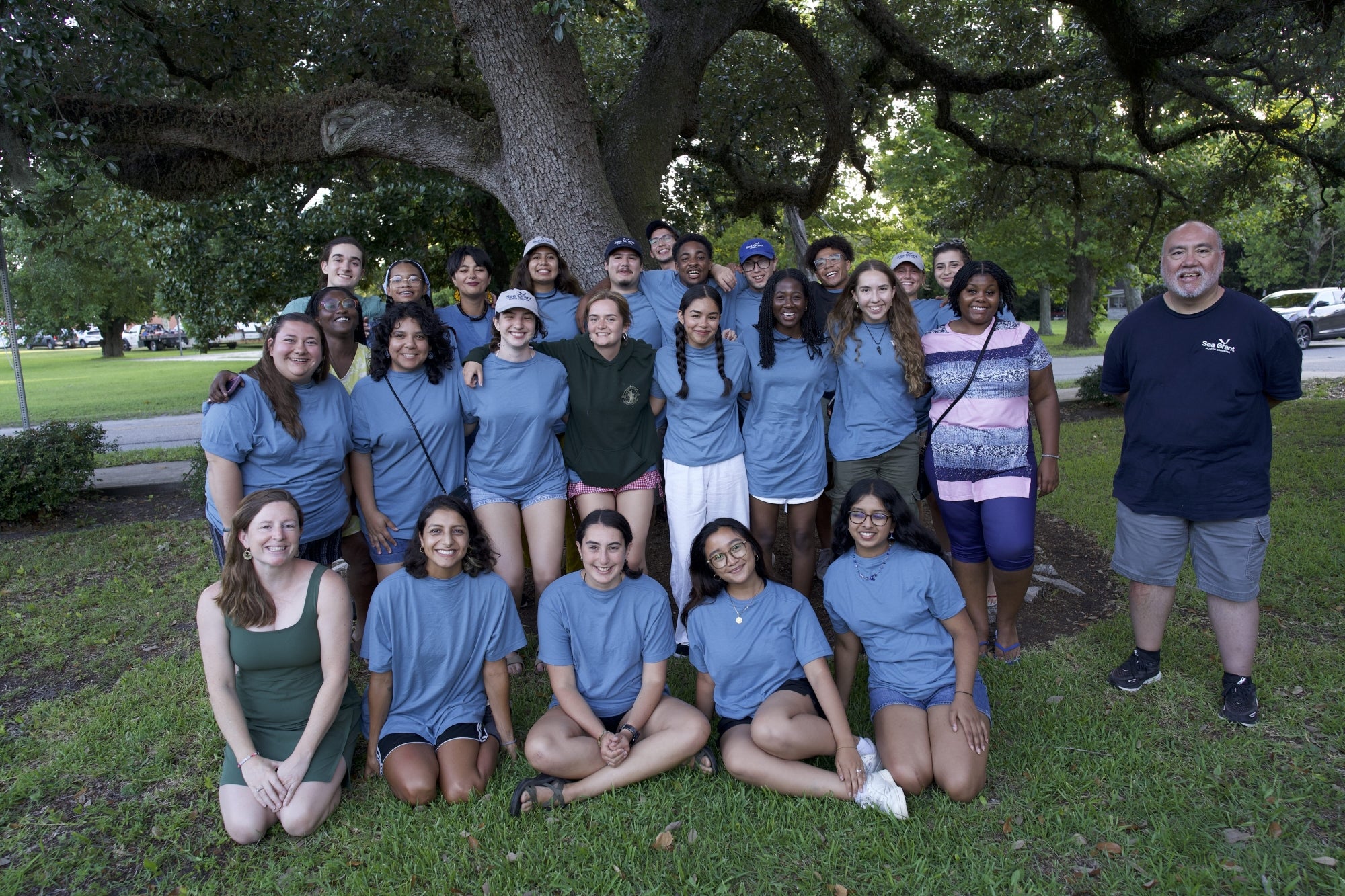
Through this process of learning and unlearning, I found strength in the network around me. During my Sea Grant College Program Community Engaged Internship field experience in Wilmington, North Carolina, I bonded with several other interns over our passion for protecting the environment and commitment to community well-being. Colleagues and mentors within the larger Sea Grant network generously shared their knowledge and connected me with people doing hands-on work in underserved areas. Local Watershed Stewards Academy leaders striving to make their programs more equitable offered candid guidance and encouragement as I crafted this long-overdue module.
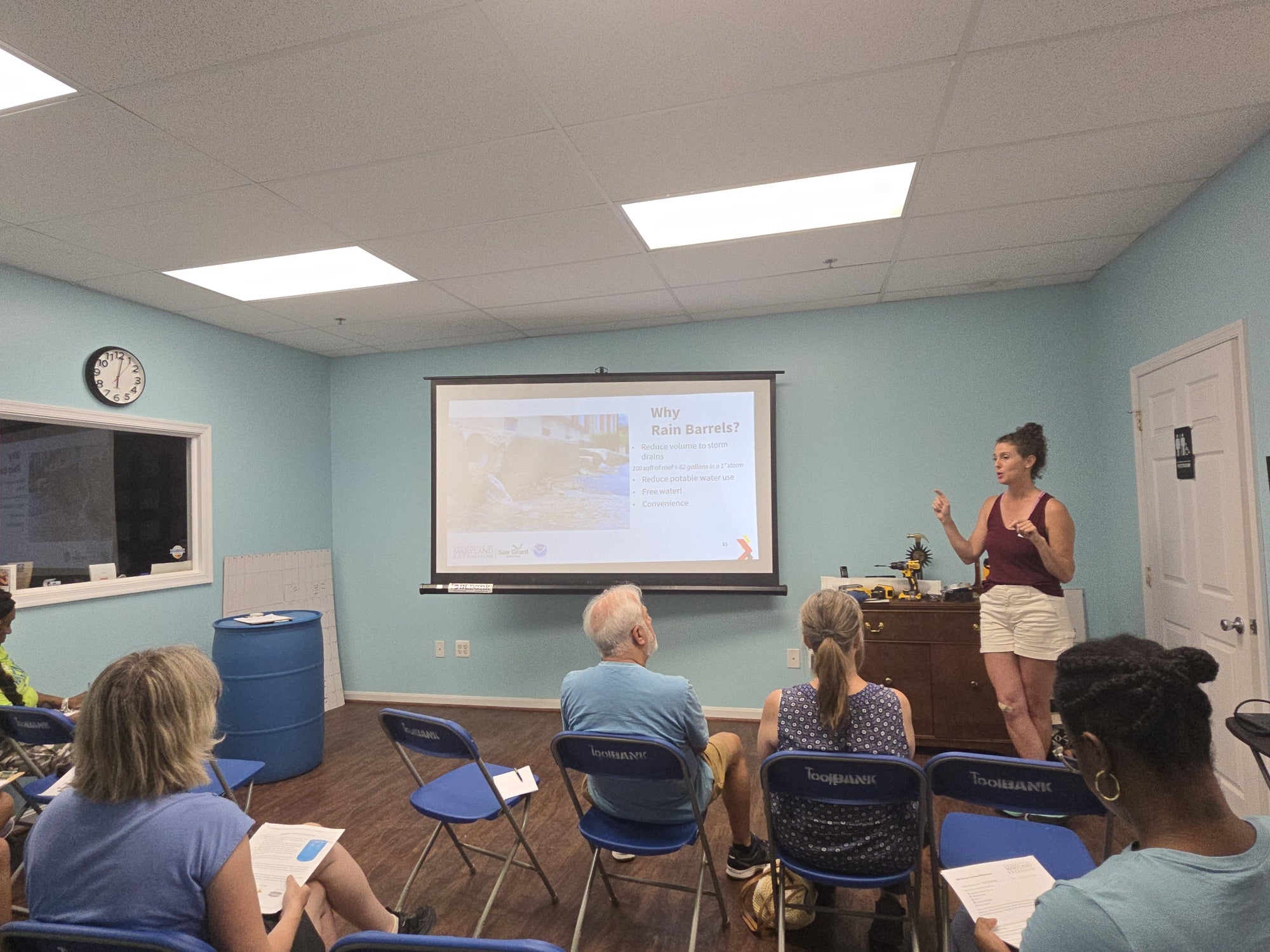
My supervisor at University of Maryland Extension, Claire Cambardella, once told me she’ll continue doing what she can to serve Maryland communities “until she can’t anymore.” Her words stuck with me. This work won’t always be empowering or neat. It will be messy, uncomfortable, and sometimes disheartening. There will be times when resources are scarce, and you wish you had more funding, more backing, more answers. But a listening ear and a genuine willingness to fight for what’s right can go a long way. And we don’t do this by working in silos; we do it by leaning on one another.
That, to me, is the heart of environmental justice. Like oysters building a reef, the movement grows stronger when individuals come together, each bringing their own strengths, perspectives, and lived experiences. I may still be finding my place in this work, but I’m no longer floating alone. I know now that my growth and impact will come from being part of this living, interconnected network—one that values relationships, uplifts community knowledge, and builds real change shell by shell, story by story.
See all posts from the On the Bay blog
